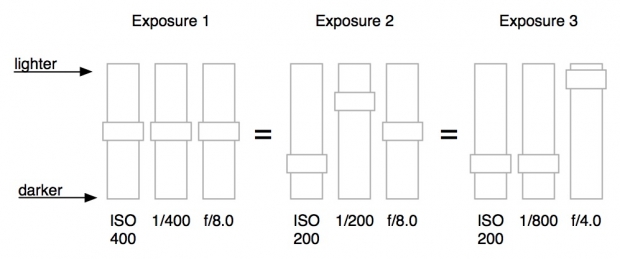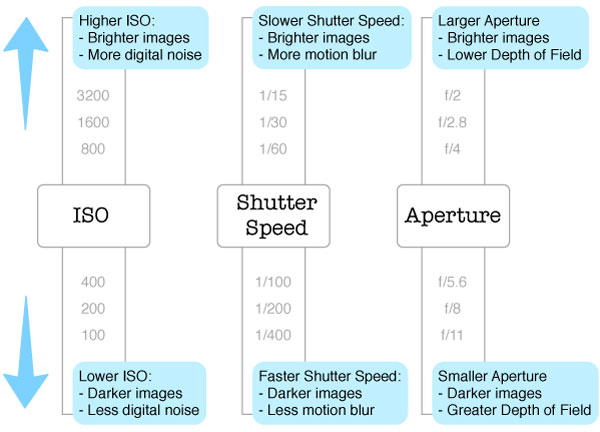Changing, say, the aperture on your camera changes things beyond the amount of light that gets into your camera. As such, you might decide that you want a smaller aperture, in order to get a greater depth of field. A smaller aperture means that less light comes in to the camera. How do we solve this?

Your camera has three different adjustments for exposure: Shutter speed, aperture, and ISO. If you adjust one so the exposure would be brighter, you can adjust another one to compensate for the additional light captured.
For example: Let’s start with an exposure taken at 1/100 second, f/4.0 and ISO 200. Now, you can change your camera settings to 1/200 second. That would let half the amount of light into your camera compared to 1/100 second, because the shutter is only open for half the duration. Your photo will now be darker. If you change your ISO to 400, the sensitivity of the sensor is doubled, and the photo will come out looking more or less the same, from a brightness point of view, as with your original exposure.
You can change any of the settings to compensate for any of the other settings: A smaller aperture can make up for a higher ISO, a faster shutter speed can make up for a larger aperture, and a lower ISO can make up for a slower shutter speed.
Other effects of exposure changes
Of course, ISO, Aperture and shutter speed don't just affect the brightness of the image... Here's a handy reminder for what else they affect:

Easy peasy!






